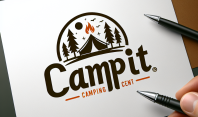When it comes to camping and enjoying the great outdoors, one of the most beloved activities is sitting around a campfire. Campfires provide warmth, light, and a sense of camaraderie that cannot be replicated by any other means. However, it is important to remember that campfires can also be dangerous if not handled properly. Here are some guidelines for tenting and camping site visitors to ensure campfire safety:
1. Check the regulations: Before starting a campfire, be sure to check with the campsite or park regulations to ensure that fires are allowed in the designated areas. Some sites may have restrictions due to dry conditions or other factors, so it is important to follow the rules to prevent wildfires.
2. Clear the area: When setting up a campfire, make sure to clear the area of any flammable materials, such as dry leaves or branches. Choose a spot that is at least 15 feet away from tents, trees, and other structures to prevent the spread of fire.
3. Build a proper fire ring: If the campsite does not have a designated fire ring, be sure to create one using rocks or metal ring to contain the fire. The ring should be at least 12 inches high to prevent embers from escaping.
4. Gather firewood: Use only local firewood that has not been transported from another area to prevent the spread of pests and diseases. Gather enough firewood before starting the fire to avoid leaving the campfire unattended while searching for more wood.
5. Never use accelerants: Never use gasoline, lighter fluid, or any other accelerants to start a campfire. Instead, use a fire starter or kindling to get the fire going safely.
6. Supervise children and pets: Always supervise children and pets around the campfire to prevent accidents and injuries. Keep a close eye on them and teach them about fire safety rules.
7. Keep a bucket of water nearby: Always have a bucket of water, sand, or a fire extinguisher nearby to quickly extinguish the fire in case of emergency. Never leave the campfire unattended, even for a short period of time.
8. Properly extinguish the fire: When you are finished with the campfire, be sure to properly extinguish it by pouring water over the embers and stirring the ashes until they are cool to the touch. Never leave the campsite until the fire is completely out.
9. Respect the environment: Leave no trace by cleaning up the campfire site and properly disposing of ashes and debris. Do not burn trash or other non-combustible materials in the fire.
10. Be prepared: Always be prepared for emergencies by having a first aid kit, flashlight, and other essentials on hand. Know the emergency procedures for the campsite and have a plan in case of evacuation.
By following these guidelines for campfire safety, tenting and camping site visitors can enjoy the warmth and camaraderie of a campfire while minimizing the risks of accidents and wildfires. Remember, safety should always be the top priority when enjoying the great outdoors.


leave a comment